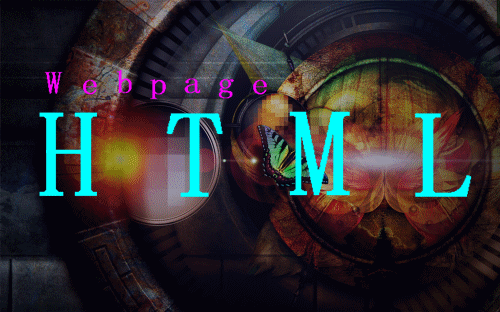Chapter 1 - Web Fundamentals (Part1)
| Introducing the World Wide Web Hypertext Documents HTML: The Language of the Web Tools for Creating HTML Documents |
Chapter 1 - Web Fundamentals (Part2)
| Creating an HTML Document Marking Elements with Tags White Space and HTML Element Attributes The Structure of an HTML File |
Chapter 1 - Web Fundamentals (Part3)
| Working with Block-Level ElementsStylesCreating ListsWorking with Empty ElementsWorking with Special Characters |
Chapter 2 - Web Page Creation (Part1)
| Working with LinksCreating Element IdsCreating Links Within a DocumentCreating AnchorsWorking with Web Site StructuresLinear StructuresHierarchical StructuresMixed StructuresWorking with Web Site StructuresLinking to a Location Within Another DocumentLinking to Documents in Other FoldersRelative PathsChanging the BaseUnderstanding URLsLinking to a Web PageLinking to FTP Servers |
Chapter 2 - Web Page Creation (Part2)
| Linking to Usenet NewsLinking to a Local FileLinking to E- mailWorking with Hypertext AttributesCreating an Access KeyCreating a Semantic LinkUsing the Link Element |
Chapter 3 - Working with Fonts, Colors, and Graphics (Part1)
| Working with Color in HTMLBasic Principles of Color TheoryRGB (Red, Green, and Blue) TripletsA Typical Colors Dialog BoxHexadecimal ValuesUsing Color ValuesUsing Color NamesThe 16 Basic Color NamesPartial List of Extended Color NamesDefining Foreground and Background ColorsWorking with Fonts and Text StylesUsing the <font> TagChanging the Font ColorSetting the Font SizeSpacing and Indentation |
Chapter 3 - Working with Fonts, Colors, and Graphics (Part2)
| Font Styles and WeightsDecorative FeaturesChoosing an Image FormatInterlaced and Noninterlaced GIFsTransparent GIFsAnimated GIFsJPEGPortable Network Graphics (PNG)MarginsInserting a Background ImageUnderstanding Image MapsServer-Side Image MapsClient-Side Image MapsDefining Image Map HotspotsCreating a Rectangular HotspotCreating a Circular HotspotCreating a Polygonal HotspotUsing an Image Map |
Chapter 4 - Designing a Web Page with Tables (Part1)
| Tables on the World Wide WebConsiderations for Text and Graphical TablesText TablesUsing Fixed-Width FontsUsing Proportional FontsUsing Preformatted TextGraphical TablesDefining a Table StructureUsing the <table>, <tr>, and <td> TagsThe Graphical Table SyntaxCreating Headings with the <th> TagIdentifying the Table Heading,Body, and FooterThe Table Heading,Body, and Footer SyntaxCreating a Table CaptionModifying the Appearance of a TableWorking with the Table BorderTable Frames and RulesCreating Frames and RulesSizing a TableCell Spacing |
Chapter 4 - Designing a Web Page with Tables (Part2)
| Cell PaddingWorking with Table and Cell SizeDefining the Table SizeSetting Cell and Column SizesSpanning Rows and ColumnsAligning a Table and its ContentsSetting a Background ColorWorking with Column GroupsThe <colgroup> TagUsing Tables for LayoutFixed-width and Fluid LayoutsUsing Nested TableChallenges of Table Layout |
Chapter 5 - Designing a Web Site with Frames (Part1)
| Introducing FramesAdvantages to Using FramesDisadvantages to Using FramesPlanning Your FramesCreating a framesetThe Frame SyntaxNesting FramesetsFormatting a FramesHiding and Displaying Scroll BarsSetting Frame MarginsSpecifying Margins SyntaxControlling Frame Resizing |
Chapter 5 - Designing a Web Site with Frames (Part2)
| Working with Frames and LinksAssigning a Name to a FrameSpecifying a Link TargetUsing Reserved Target NamesUsing the <noframes> TagThe <noframes> SyntaxWorking with Frame BordersSetting the Border ColorSetting the Border WidthRemoving the Frame BordersCreating Inline FramesThe Floating Frames Syntax |
Chapter 6 - Creating Web Page Forms
| Introducing Web FormsForms and Server-Based ProgramsCreating the Form ElementCreating Input BoxesSetting the Size of an Input BoxCreating a Password FieldCreating a Selection ListModifying the Appearance of a Selection ListMaking Multiple SelectionsWorking with Option GroupsCreating Option buttonsCreating a Field SetCreating Check BoxesCreating a Text Area BoxWorking with Form ButtonsCreating a Command buttonWorking with Hidden FieldsWorking with Form AttributesUsing the mailto ActionSpecifying the Tab OrderSpecifying an Access Key |
Chapter 7 - Using Multimedia on the Web
| Working with MultimediaWorking with AudioSampling Rate, Sample Resolution, and ChannelsSound File FormatsLinking to an Audio ClipEmbedding an Audio ClipPlaying Background SoundsWorking with VideoFrame Rates and CodecsLinking to a Video ClipEmbedding a Video ClipUsing a Dynamic SourceSupporting Non-Embedded ElementsCreating a Marquee with Internet ExplorerWorking with the Object Element |
